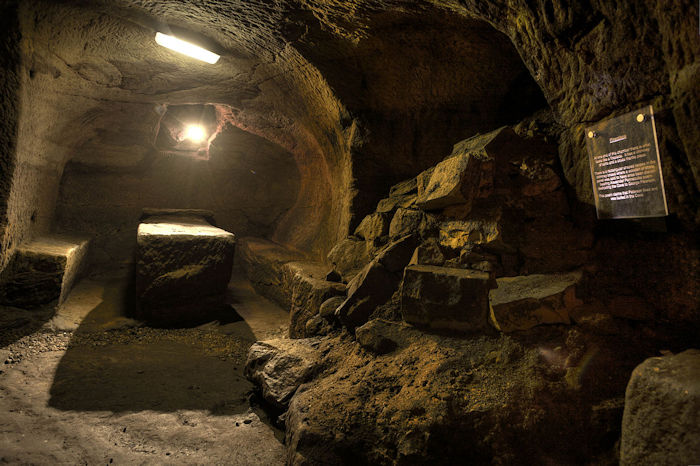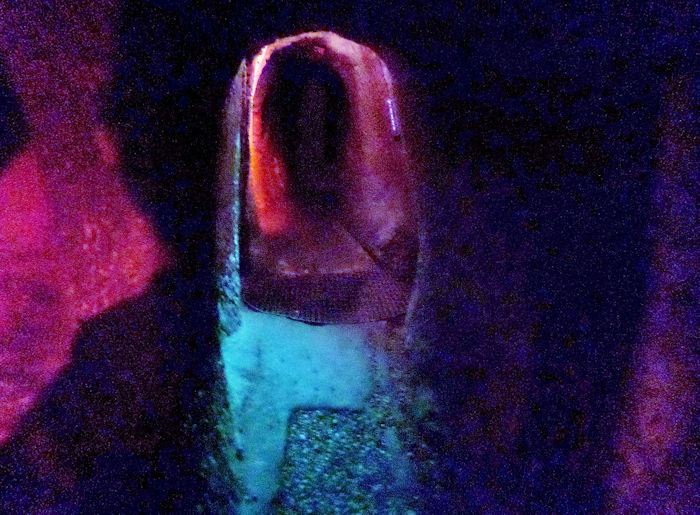Gilmerton Cove: Mysterious Cave System Still Keeps Its Centuries-Old Secrets
A. Sutherland - AncientPages.com - Gilmerton Cove is a mysterious cave system on the outskirts of Edinburgh, Scotland. For a long time, it was considered the work of a blacksmith George Paterson, who used it from 1724 to 1735 (or 1737), according to ancient records.
But there is a problem. Even the most skilled one, this blacksmith, would not have created the entire system himself.
Gilmerton Cove. Credit: John Dale - CC BY-SA 2.0
His claim to have spent five years excavating the place was long accepted at face value, though a moment's thought tells you that such a task would have taken the lifetimes of several hard-working men. So, most probably, he only cleared out the rubble and backfill of a much earlier period.
So the question remains: who were the builders responsible for creating this mysterious underground structure?
Gilmerton Cove is a series of underground passages and chambers hand-carved from sandstone in a former mining village. Initially, the underground complex was lit by openings to the sky, but they were covered long ago.
The caves are connected by a 12-meter main corridor equipped with two entrances, the height of which varies between 1.60 and 3 meters. After five years of restoration work, it was opened in August 2003 and now houses ingenious audio and visual displays. Still, it does not mean that Gilmerton Cove has revealed its old secrets. Various theories about the origin of the place and its destination cannot shed light on the Cove's mysterious past.
Extensive historical and archaeological research has failed, too. However, Gilmerton Cove was the 18th-century residence of the local blacksmith George Paterson, but it has never been confirmed that the man was responsible for any carvings in the Cove.
Usually, many theories and suggestions surround mysterious, unexplained places, including Gilmerton Cove.
Was it once a smugglers' secret place, a gathering place for the Knights Templar? Or perhaps, a covenant hideout or a shelter for someone wanting to hide? No one has clues.
Gilmerton Cove, view of a passage, Edinburgh, Scotland. Credit: Rosser1954 - CC BY-SA 4.0
Extensive archaeological and historical research failed to explain the Cove's mystery once and for all. In 2017, a study by scientists from the University of St Andrews and the University of Edinburgh using ground-penetrating radar revealed that the network of passageways and chambers might be more extensive than previously thought.
In her book "111 Places in Edinburgh That You Shouldn't Miss", Gillian Tait draws our attention to "the scale of the place, and the shape and texture of the womb-like walls, all hewn out of the living rock with tiny strokes of a chisel. But what's even more surprising is the built-in furniture, including long benches and tables, gently curving and beautifully cut from the solid sandstone. One of the tables is horn-shaped and has a deep concave bowl cut into it. It's as if the Flintstones' house had been remodeled by a designer from 20th-century Milan…."
"The underground complex was originally lit by openings to the sky, but these have long since been covered over."
If the workshop was there once, due to lack of ventilation, such working space was never in use. There's a well next to it, but no water and wooden doors separate two smaller rooms.
In the walls of the structure were once holes, which, over time, were sealed. It means that the rooms were once ventilated from above, and the incoming light well-lit the whole system.
The place is undoubtedly old and has been reused many times by many people over at least recent centuries. It is still possible that Gilmerton Cove's true beginnings are much more ancient. Perhaps one day, it will be possible to prove that the Cove, as we call it today, is a sacred prehistoric site. It has already been suggested that it was a Druid temple dated to the times long before the settlement of Edinburgh.
Carved signs of the circus and the coals, clearly visible on the tables, indicate masons and the initials (quite deep) can suggest either the work of a drunker) or someone belonging to society.
However, these are only more or fewer speculations.
Written by – A. Sutherland - AncientPages.com Senior Staff Writer
Updated on November 10, 2023
Copyright © AncientPages.com All rights reserved. This material may not be published, broadcast, rewritten or redistributed in whole or part without the express written permission of AncientPages.com
More From Ancient Pages
-
 Archaeologists Discover Previously Unknown Huge Galleries And Petroglyphs In Colorado
Archaeology | Dec 15, 2023
Archaeologists Discover Previously Unknown Huge Galleries And Petroglyphs In Colorado
Archaeology | Dec 15, 2023 -
 2,600-Year-Old Blocks Of White Cheese Discovered At Giza’s Saqqara Necropolis, Egypt
Archaeology | Sep 15, 2022
2,600-Year-Old Blocks Of White Cheese Discovered At Giza’s Saqqara Necropolis, Egypt
Archaeology | Sep 15, 2022 -
 Phoenicians: Powerful Traders And Their Remarkable Seafaring Achievements
Civilizations | Jan 4, 2021
Phoenicians: Powerful Traders And Their Remarkable Seafaring Achievements
Civilizations | Jan 4, 2021 -
 Saturnalia Feasts In Roman Empire
Ancient History Facts | Jun 30, 2018
Saturnalia Feasts In Roman Empire
Ancient History Facts | Jun 30, 2018 -
 Hidden Byzantine Hoard Offers Evidence Of A Dramatic Historial Event In The Levant
Artifacts | Oct 13, 2022
Hidden Byzantine Hoard Offers Evidence Of A Dramatic Historial Event In The Levant
Artifacts | Oct 13, 2022 -
 Patara: One Of The Six Big Cities Of Lycian League Is Celebrated In 2020
Archaeology | Jan 15, 2020
Patara: One Of The Six Big Cities Of Lycian League Is Celebrated In 2020
Archaeology | Jan 15, 2020 -
 Outstanding Discovery Of Unique Swords From The Viking Age Near Gausel Queen’s Grave
Archaeology | Jun 3, 2022
Outstanding Discovery Of Unique Swords From The Viking Age Near Gausel Queen’s Grave
Archaeology | Jun 3, 2022 -
 Mysterious Disappearance Of Explorer Peng Jiamu In Lop Nur – The Wandering Lake
Featured Stories | Dec 20, 2018
Mysterious Disappearance Of Explorer Peng Jiamu In Lop Nur – The Wandering Lake
Featured Stories | Dec 20, 2018 -
 Partial Skull Fossils Found In China Could Be A New Species -‘A Kind Of Unknown Or New Archaic Human’, Researcher Says
Archaeology | Mar 6, 2017
Partial Skull Fossils Found In China Could Be A New Species -‘A Kind Of Unknown Or New Archaic Human’, Researcher Says
Archaeology | Mar 6, 2017 -
 Quest For Atlantis Of The Sands – Iram Of The Pillars – A Legendary Lost City
Featured Stories | Aug 7, 2018
Quest For Atlantis Of The Sands – Iram Of The Pillars – A Legendary Lost City
Featured Stories | Aug 7, 2018 -
 Ancient Egyptian Knowledge Of The Cosmic Engine And Unseen God Of The Universe
Ancient Mysteries | Jan 15, 2019
Ancient Egyptian Knowledge Of The Cosmic Engine And Unseen God Of The Universe
Ancient Mysteries | Jan 15, 2019 -
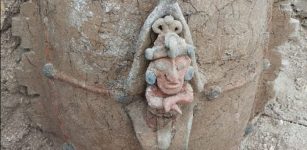 Funerary Urn Depicting The God Of Corn Unearthed In Mexico By INAH Archaeologists
Archaeology | Jan 11, 2024
Funerary Urn Depicting The God Of Corn Unearthed In Mexico By INAH Archaeologists
Archaeology | Jan 11, 2024 -
 Those Who Mysteriously Disappeared To A World Beyond Human Understanding
Featured Stories | Apr 30, 2019
Those Who Mysteriously Disappeared To A World Beyond Human Understanding
Featured Stories | Apr 30, 2019 -
 Remarkable South-Pointing Chariot – Ancient Cybernetic Machine Invented 1,700 Years Ago Is An Engineering Masterpiece
Ancient Technology | Jul 17, 2014
Remarkable South-Pointing Chariot – Ancient Cybernetic Machine Invented 1,700 Years Ago Is An Engineering Masterpiece
Ancient Technology | Jul 17, 2014 -
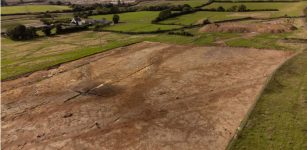 Intriguing Ancient Roman Road Discovered Under The New Town In Devon
Archaeology | Feb 7, 2023
Intriguing Ancient Roman Road Discovered Under The New Town In Devon
Archaeology | Feb 7, 2023 -
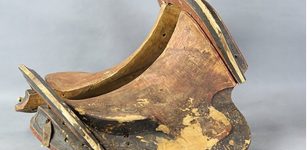 World’s Oldest Known ‘True’ Saddle Discovered In East Asia
Archaeology | Dec 11, 2023
World’s Oldest Known ‘True’ Saddle Discovered In East Asia
Archaeology | Dec 11, 2023 -
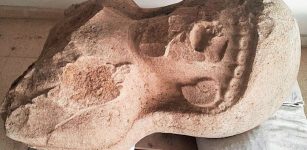 3,000-Year-Old Female Statue Unearthed In Turkey
Archaeology | Aug 11, 2017
3,000-Year-Old Female Statue Unearthed In Turkey
Archaeology | Aug 11, 2017 -
 3,000-Year-Old Silver Goblet That May Have Belonged To Mannaea Kingdom – Unearthed
Archaeology | Apr 3, 2019
3,000-Year-Old Silver Goblet That May Have Belonged To Mannaea Kingdom – Unearthed
Archaeology | Apr 3, 2019 -
 Ruins Of Biblical City Of Corinth Discovered Underwater – Giant Monuments and Remains Of Lighthouse Still Well-Preserved
Archaeology | Dec 19, 2017
Ruins Of Biblical City Of Corinth Discovered Underwater – Giant Monuments and Remains Of Lighthouse Still Well-Preserved
Archaeology | Dec 19, 2017 -
 Ancient Mystery Of The American Southwest – Unusual Skeletons And Mummies – Part 2
Ancient Mysteries | Jul 24, 2018
Ancient Mystery Of The American Southwest – Unusual Skeletons And Mummies – Part 2
Ancient Mysteries | Jul 24, 2018

